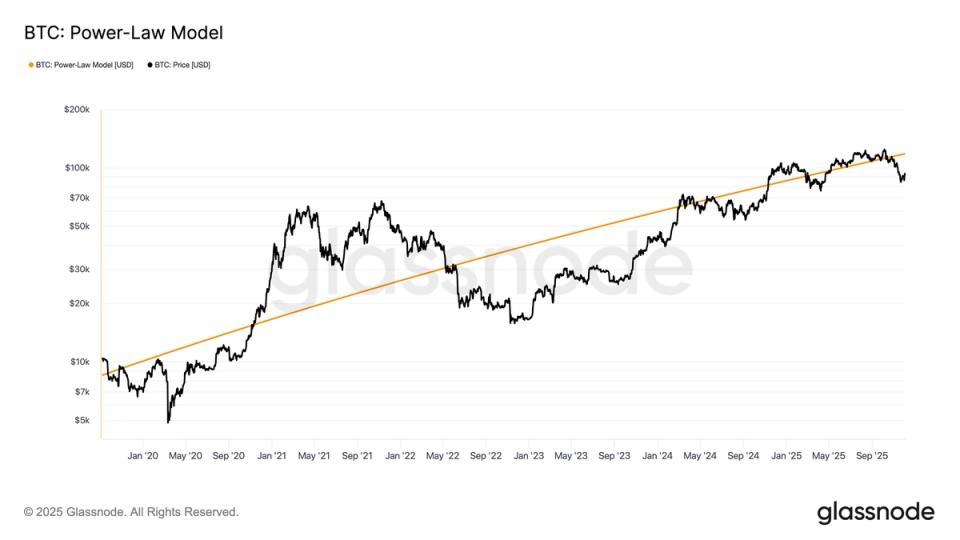CryptoCurrency
Is Bitcoin About to Break Its Last Surviving Valuation Model?

Over a long enough time frame, every long term valuation model for bitcoin has eventually been broken, yet the one that has maintained the strongest narrative this cycle has been the power law model.
Historically, in previous cycles, bitcoin has tended to overshoot this model during bull markets and fall below it during bear markets, but in the current cycle the price has largely remained close to the model’s trajectory.
The bitcoin power law framework provides a mathematical viewpoint of long term price trends, revealing that bitcoin’s historical performance follows a power law distribution on a log scale. This implies a relationship between time and price. However, the model relies on historical observations.
In theory it is a backward looking model that does not guarantee future predictive accuracy, particularly given the unpredictable nature of financial markets. The model is useful for understanding long term structural trends.
Below $90,000, bitcoin currently trades at a steep discount to the model. The power law value sits near $118,000 which places the spot price roughly 32% beneath the model. This is the largest deviation since the yen carry trade unwind back in august 2024, which produced a 35% deviation from the trend line and took three months to recover.
From a broader perspective, bitcoin has spent most of this cycle tracking close to the model, whereas in previous cycles it deviated far more aggressively both above and below it.
In the last cycle, the most prominent model was the stock to flow framework created by the anonymous analyst Plan B, which assumes that scarcity directly drives value. The model has been invalid since January 2021, and according to current Glassnode data it would imply a price of roughly $1.3 million per bitcoin today.
The key question now is whether bitcoin mean reverts back toward the power law trend or breaks lower and challenges the validity of yet another long standing model.











